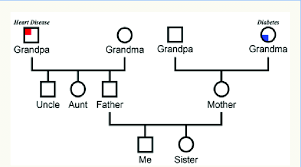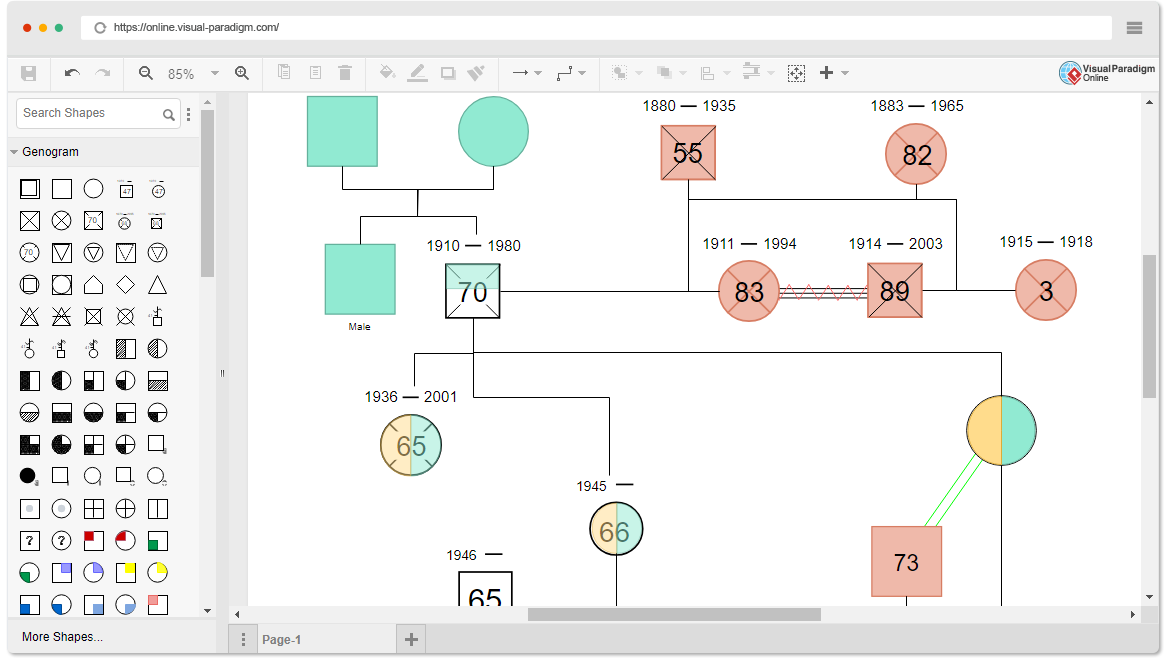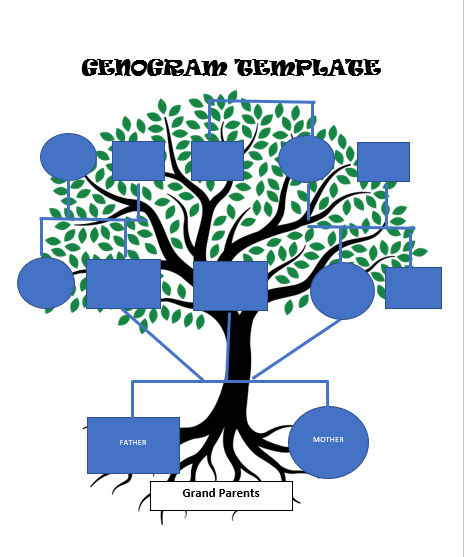

For example, a genogram will not only tell you that your uncle Paul and his wife Lily have three children, but that their eldest child was sent to boarding school, that their middle child is always in conflict with her mother, that their youngest has juvenile diabetes, that Uncle Paul suffered from depression, was an alcoholic, and a philosopher, while Aunt Lily has not spoken to her brother for years, has breast cancer and has a history of quitting her jobs. It will not only show you the names of people who belong to your family lineage, but how these relatives relate to each other. The inside of the symbol will hold the person’s current age or various codes for genetic diseases or user-defined properties: abortions, still-births, SIDS, cohabitations, etc.Ī genogram can contain a wealth of information on the families represented. Genogram symbols will usually have the date of birth (and date of death if applicable) above, and the name of the individual underneath. There are also computer programs that are custom designed for genograms. Genograms can be prepared by using a complex word processor, or a computer drawing program. Some genogram users also put circles around members who live in the same living spaces. Figure 1 illustrates basic genogram symbols with various types of individuals. Few if any genealogists yet use them.Ī genogram is created with simple symbols representing the gender, with various lines to illustrate family relationships. Some practitioners in personal and family therapy use genograms for personal records and/ or to explain family dynamics to the client. Genograms are now used by various groups of people in a variety of fields such as genealogy, medicine, psychiatry, psychology, social work, genetic research, education, and many more.

Genograms were first developed and popularized in clinical settings by Monica McGoldrick and Randy Gerson through the publication of a book titled Genograms: Assessment and Intervention in 1985. It can be used to identify repetitive patterns of behavior and to recognize hereditary tendencies. It goes beyond a traditional family tree by allowing the user to visualize hereditary patterns and psychological factors that punctuate relationships. Your family health history.A genogram is a pictorial display of a patient's family relationships and medical history. National Human Genome Research Institute. For help using the SmartArt feature in Word, check out this Answer.If you are using Microsoft Word to create the pedigree, YouTube has many helpful tutorials.Check out the "Creating your family health history" presentation, created by the NIH, linked below in the Links & Files section.Progeny has its own support available: . Please note that Rasmussen support services like the Personal Support Center will not be able to assist you with sources found outside of Rasmussen.
#Create genogram free#
After you have collected the necessary information, it is time to create the pedigree using Microsoft Word or a free online site like Progeny.

#Create genogram series#
Genograms indicate gender, age, ethic origin, health status, educational achievements, family relationships, social relationships, and emotional relationships using a series of color coded lines, shapes, and symbols.Ī pedigree is used by clinicians to track family history and to look for patterns or indications to help diagnose a patient.īefore creating a pedigree, it is important to gather the information needed first. A genogram is a tool for tracking family history and relationships similar to a family tree. You will often hear the terms genogram and pedigree used interchangeably. A pedigree is similar to a genogram however, it does not include the psychological factors included in a genogram.

53 Textbooks, eTextbooks, & Digital ContentĪ pedigree is a family tree that includes the family members and information about their health.
#Create genogram professional#
8 Professional & Academic eCommunications.14 Mathematics, Algebra, Geometry, etc.102 Justice Studies and Paralegal Studies.


 0 kommentar(er)
0 kommentar(er)
